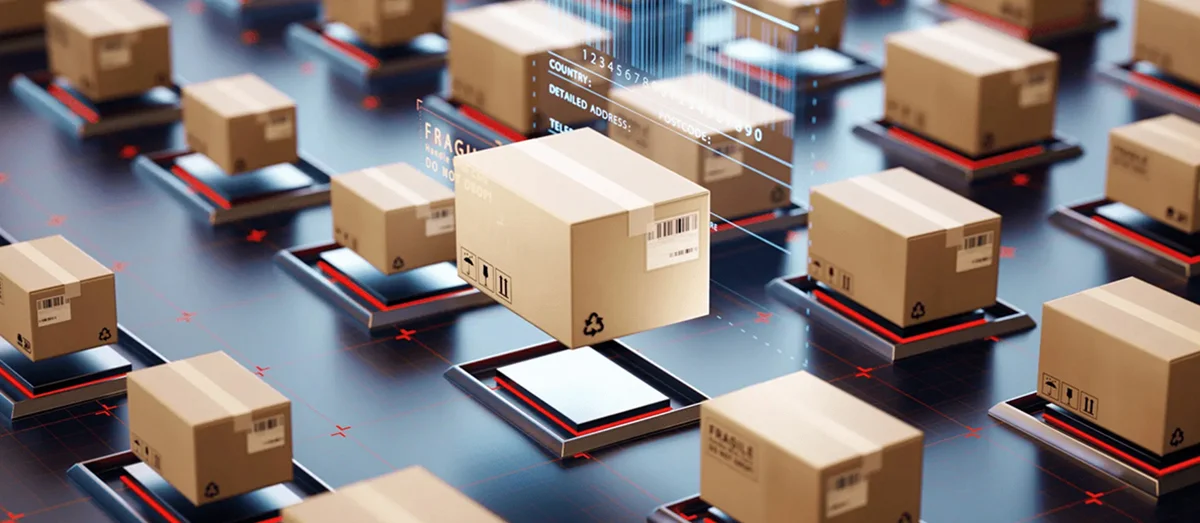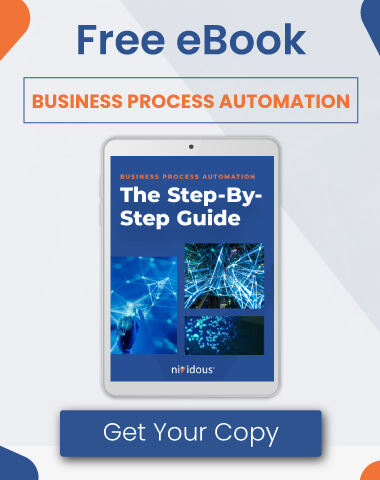The logistics sector has always been ripe for automation, from the first mechanical pallet conveyors to the latest lights-out facility. Today’s most powerful logistics automation solutions may not be found on the warehouse floor, however, but in the cloud. Logistics managers are starting to eliminate operation-wide inefficiencies with automation technologies like Robotic Process Automation (RPA) bots, Intelligent Document Processing (IDP) systems, and full hyperautomation platforms that orchestrate end-to-end processes involving both software and human workers.
It’s worth taking a moment to review how we got here. Not so long ago, logistics management ran on paper. Shippers typed up orders, bills of lading, and invoices and handed them back and forth. It was slow and error prone. When computing really took off in the industry, in the 1970s, Electronic Data Interfaces (EDIs) began to share shipping data, enabling carriers to implement their first track-and-trace programs. Later, those carriers began to share that visibility with their clients, leading us toward the modern era of shipping notifications and tracking numbers with every order.
With the advent of artificial intelligence, logistics automation tools began to confront more complex problems. Today, automation tools with AI capabilities are streamlining logistics tasks from document verification to order tracking to predictive modeling. Here are just a few of the ways logistics automation technologies are changing the industry today.
How much can AI-driven automation save on your logistics costs?
Find out with the Nividous automation RoI calculator
Logistics Process Automation: Connecting Disparate Systems
Digital management systems are central to business operations, but logistics processes rarely operate within a single platform. To manage an end-to-end supply chain, logistics professionals work with multiple applications, including (but not limited to):
- Manufacturing Execution Systems (MES). This software provides visibility into manufacturing processes, including the tracking and tracing of both raw materials and finished goods within the plant.
- Warehouse Management Systems (WMS). Finished goods must be stored pending orders, which is where the manufacturer’s warehouse comes into play. Of course, if the Original Equipment Manufacturer (OEM) sells to retailers, those customers will operate their own warehouses, too. In order to keep track of a complex flow of goods—and avoid losing items within the facility—warehouse managers use a WMS.
- Transportation Management Systems (TMS). The TMS helps shippers find optimal carriers and shipping lanes for their products and tracks shipments throughout the supply chain.
- Enterprise Resource Planning (ERP) Systems. While ERPs are meant to be unified business management systems, providing tools for everything from accounting to risk management, they typically don’t provide strong supply chain visibility on their own, necessitating the other systems on this list.
- Order Management Systems (OMS). This software manages and processes sales orders, receiving order data from a customer-facing order portal. It’s often part of a broader ERP—but not always.
Data flows through all these systems, providing companies with the visibility they need to operate more efficiently. When these systems all exist in their own silos, the transfer of data from one to another is a laborious, repetitive task, forcing skilled employees to spend their time on data entry rather than growth-oriented activities. Digital automation binds disparate data environments into a single system, controlling the flow of data without dominating staff workdays. But that’s not the only advantage of today’s digital automation technology.
Predictive Automation In The Transportation Industry And Broader Supply Chain Management
Logistics providers can use automated information sharing to draw on TMS, WMS, and other data sources for a centralized repository of vital information called a data mart. This data mart can then feed into a supply chain “control tower,” a custom dashboard that creates a centralized environment for end-to-end supply chain management.
Going a step further, logistics managers can feed data from these systems into a model of the entire supply chain: a so-called digital twin. These digital twins fall into four categories, listed in order of complexity:
- Visual digital twins provide a literal picture of the supply chain, including freight movements, inventory levels, asset use, and other operational details—all in real time. Sometimes they draw on edge devices, sensors built into equipment or freight loads themselves—the Industrial Internet of Things sending up-to-the-moment data to the digital twin.
- Randomized digital twins are principally modeling tools. They allow supply chain managers to model discrete events based on randomized values, testing boundaries through simulation.
- Data-driven digital twins also provide event modeling, but they base it on real-time data from your existing supply chain. They load true work requirements and constraints and provide accurate predictions so users can optimize systems before they’re stressed. However, data-driven digital twins don’t use machine learning to provide those optimizations.
- Learning data-driven digital twins do use machine learning, drawing on true historical data to automatically manage external constraints, such as seasonality and weather. They generate optimized work schedules based on changing demands and resources—automated scheduling powered by artificial intelligence.
The use of digital twins for warehouse logistics automation and shipping management is already creating measurable improvements. The Boston Consulting Group reports that digital twins have allowed early implementers to cut capital expenditures by up to 10% and improve pre-tax earnings by 1% to 3%. However, the rise of digital twins is just one example of the supply chain automation trends that logistics managers should watch.
5 Logistics Automation Trends Shippers Should Follow
The logistics automation industry is moving quickly, and it’s tough to keep track of all the latest news. Here are five of the most important logistics automation trends to look for in the near future.
1. Process mining to define automation opportunities
Automating a broken process only spreads inefficiency. With the skilled use of process mining tools, managers can get a true picture of how a task is completed, step by step. By mapping the process thoroughly, you identify the inefficient steps at the keystroke level. Those are the tasks to target for automation via RPA.
2. Expansion of RPA in logistics call centers
Call center staff are responsible for coordinating dock-door schedules, incoming and outgoing shipments, and movements of goods within a warehouse. Warehouse personnel are required to enter and validate data entry. There are a lot of moving parts, and navigating them requires lots of repetitive keystrokes, from moving data between systems to logging into supplier portals to updating clients. Automation with RPA can take over these tasks, reducing keystrokes, re-keying, rework, and other call center inefficiencies.
3. Integration of ERPs and intelligent automation “wrappers”
Intelligent automation can make work for front-line logistics staff much easier. One of the key ways it does this is by providing a single-pane-of-glass interface—a sort of user “wrapper” for the many software systems they must otherwise navigate. (Some industry professionals call this interface a “cockpit,” but we use the term “wrapper” to denote its flexible quality.)
4. Digitally automated processes within customer and supplier portals
Logistics staff spend a lot of time maneuvering through customer and supplier portals; web portals have become an industry staple. Whether handling inbound or outbound orders, RPA can take over many repetitive tasks associated with these portals.
5. Multimodal shipping optimization, especially among enterprise shippers
There are lots of variables in the shipping industry. One day, a shipper might get better rates going half the distance via rail and then consolidating with other orders to fill a full truckload. The next week, a handful of less-than-load carriers might provide a better value. Multimodal shipping is the blending of these different shipping modes to find an optimal path in terms of both on-time delivery and cost. Automation tools called “combinatory optimizers” take all the variables into account to generate the most efficient carriers and shipping paths available, often using machine learning to improve over time.
This sort of predictive automation is where the industry is headed, but you must start with full visibility into your supply chain to get there. In the logistics industry, visibility drives savings opportunities; it’s the prerequisite for optimization.
Logistics automation helps bring that visibility to shippers—but with the Nividous platform, it doesn’t stop there. Intelligent automation with Nividous helped one logistics company reduce turnaround time on key tasks by 60%, saving more than 890 staff hours every month. Contact us to find out what logistics automation on the Nividous platform can do for your operation.





![Business Process Automation: Your Complete Guide [2023]](https://nividous.com/wp-content/uploads/2023/09/Business-Process-Automation-Your-Complete-Guide-2023-Blog-Feature.webp)